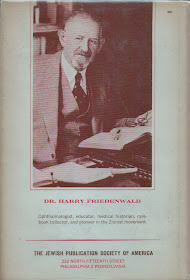It was December 30, 1919 when the news arrived in Baltimore that Sir William Osler, MD, had died in Oxford the previous day. His health had been declining since the death of his beloved son, Revere, in August of 1917, during WWI.
After Revere's death, Sir William continued to work cataloging his library, and on textbook revisions. He made sure to keep busy, so he wouldn't dwell on this tragedy.
In the summer of 1919, he got bronchitis, and several months later, he came down with what was probably influenza. The influenza pandemic of 1918-1919 was waning, but not over.
At the annual meeting of the Medical & Chirurgical Faculty, Sir William was honored on the occasion of his 70th birthday, and the Faculty sent a cable to him:
"The Medical and Chirurgical Faculty of Maryland, in session, unanimously extends "The Chief" on his 70th anniversary, greetings, congratulations and love."
Throughout his illness, he kept up his correspondences with friends around the world, including his friends at the Faculty. He knew his time was short, and he began making lists for the disposition of special items, all bestowed with special notes indicating why he was sending them.
In November of 1919, Sir William had contracted pneumonia, and was in serious condition.
In mid-December, news came in that Sir William was on the mend.
Sir William died at 4:30 on the afternoon of December 29, 1919. His passing was described by some lines by Shelly, which he once quoted in a letter to the Editor of the Spectator:
Mild is the slow necessity of death:
The tranquil spirit falls beneath its grasp,
Without a groan, almost without a fear,
Resigned in peace to the necessity;
Calm as a voyager to some distant land;
And fill of wonder, full of hope as he.
Word of his death made the front page of the Baltimore Sun on Tuesday, December 30, with a long article, and a large photograph.
His death was blamed, in part, on a train strike in the UK, which caused him to make a two-day car trip from Oxford to Glasgow, Scotland. On the drive, he caught a cold, which lead to pneumonia and his eventual death.
Osler’s body lay in the Lady Chapel, Christ Church, until the
afternoon of January 1, 1920, when the service was read. The
same day, at many places throughout the world, similar services took place. In
Baltimore, at Old St. Paul’s Church, the Rev. Almon Abbott preached the funeral sermon.
A call was put out to physicians and friends in Baltimore to attend the service which was held just a few blocks south of Osler's former home on the corner of Franklin and Charles Streets.
On January 13, 1920, a memorial service was held at the Faculty, where Sir William had served as President in 1896, and where he was instrumental in establishing its medical library and much more.
Sir William and Lady Grace Osler are both interred at the Osler Library at McGill University in Montreal.
Sir William Osler, MD
July 12, 1849 - December 29, 1919






















































